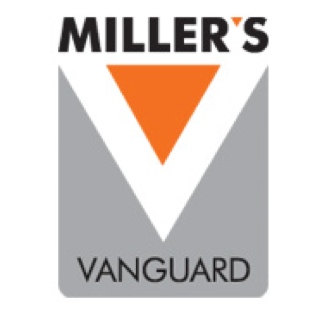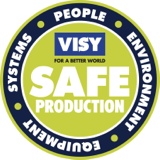Title Page
-
Bodyline PVT LTD
-
Conducted on
-
Prepared by
-
Location
Audit Checklist
Aboveground and Underground Storage Tanks (AST & UST)
-
AST/UST inventory available/Survey has conducted
-
Training has conducted once in 12 months
-
AST / UST Documented integrity testing carried out once a year
Asbestos
-
Is there an updated and current asbestos inventory? Annual / process change / expansion
-
Training conducted for the asbestos handling
-
Is there a survey done on asbestos or ACM? Insulation , suspect materials, Laggings
Hazardous Materials
-
A complete chemical inventory (embellishment, engineering, stain removing, janitorial, laboratory, dyehouse, kitchen, etc)availble and updated in each additions/ remove
-
Chemical risk assesment conducted
-
Chemical handling training has conducted once in 12 months (for dye house and printing once in 6 months) MAS Chemical Mgt. roadmap, RSL MRSL Traning conducted to ESH team/ chemical mgt. team & direct chemical users once in 6 months
-
Secondary containers availble 110% & 125%
-
Does the factory ensure that special categories of employees (e.g. pregnant/lactating employees, juvenile/elderly workers, employees with disabilities, trainees/apprentices/interns) are not exposed to hazardous chemicals? (please elaborate if 'No')
-
Fire extinguishers available
-
Eye wash system available
-
Detectors available
-
Isolation / Acccess control
-
No visual spilliage
Gas Cylinders
-
A list of compressed gas cylinders within the factory
-
Has safety training conducted on LPG and other gas cylinders
-
Pressure test conducted and reports available
-
Are compressed gas cylinders secured from accidental tippingfalling?
-
Are compressed gas cylinders stored away from heat and other fire sources?
-
Are compressed gas cylinders chained, labeled and segregated? . (Physical segregation required)
-
Empty and full LPG lcylinders seperated physically and labelled
-
Authorised persons has displayed and updated
-
Handling guidelines displayed
-
Emergency procedure has displayed
Hazardous Waste
-
Scheduled Waste Managemnet License (SWML) is valid and includes all hazardous waste categories generated
-
Are chemicals/waste released in to the environment in an unsafe or uncontrolled way, or in any other manner that has a negative impact?
-
E waste were stored at fire sum room & water sump room
-
Is the waste managed appropriately at the waste collection area?
-
Can only authorized personnel enter hazardous waste areas? (access control available and authorised persons displayed)
-
Does the hazardous waste collection area have the following appropriate safety precautions?
-
It has appropriate fire preventive and control measures
-
Has emergency/ spill response plan on display
-
Has adequte and complete spill response kits
-
Has eye wash station within 10 feet distance
Polychlorinated Biphenyls [PCB]
-
The factory has conducted a PCB survey to identify all equipment that contains greater than 50 ppm of PCB
Solid Waste (NonHazardous Waste) Remove
-
Does the factory have any hazardous waste mixed in with nonhazardous waste, against legal requirements?
-
Is the factory's solid waste storage area secured with a roof and protected?
-
Is the factory solid waste storage area clean and sanitized?
-
Does the factory use only authorized waste vendors / facilities to dispose of its solid waste? (Agreements and licenses)
-
Does the factory's solid waste collection have segregated waste streams?
Wastewater
-
Does the factory conducted waste water testing once in three months (5 working day tolerence)
-
Is there any program to reduce or eliminate the risks of nanomaterials in order to protect employees and contractors from potential exposures related to the use, manufacture and disposal of nanoparticles, ultra fine particles, and nanoaerosols?
-
What sort of engineering controls are in place to reduce/eliminate contact with nanomaterials?
-
a) Control technique, such as enclosure (i.e. isolation of the generation source away from the worker) and local exhaust ventilation)
-
b) Dust collection system with HEPA Filter
-
c) Industrial ventilation system (properly engineered, designed, tested and maintained)
-
Which of the following work practices are in place?
-
a) Work areas are appropriately cleaned at the end of each work shift using either a HEPAfiltered vacuum cleaner or wet wiping methods (dry sweeping or air hoses should not be used to clean work areas)
-
b) Storage and consumption of food and beverages is not carried out in the workplace
-
c) Hand washing facilities are provided, and workers are encouraged to use them whenever they leave their workstation
-
d) Facilities for showering and changing clothes are provided to prevent the inadvertent contamination of other areas (including takehome) caused by the transfer of nanoparticles on clothing and skin
-
e) Proper PPE evaluation and selection (e.g. nanoparticle resistant gloves, clothes and respiratory protection)
-
f) Waste management in accordance to appropriate practices
-
g) Systemic evaluation of exposure
-
An annual training is conducted, which includes:
-
Inspection certificates / testing certificates available
Worker Protection
Machine Safety
-
Are safety instructions for each machine available in the spoken language of operators?
-
Did you observe any situation that operator is not aware of/or not following safety instructions for machine? (If yes, please provide the details in comments)
General Work Environment
-
Evacuation Routes are clear
-
Emegencey evacuation parthways were blocked at production floor
-
Evacuation pathways marked with running man stickers (with sign / arrow / wording)
-
Some radium arrows were missed at production floor
-
Evacuation paths are kept clear
-
Fire exit adequecy report obtained from
-
Factories registration done
-
Exits (door openings) have free run minimum 1.1m or ramp
-
All doorways or passageways that do not lead to a safe exit are marked as NO EXIT / Not an emergency Exit or NOT AN EXIT
-
Racking System
-
Racking system stability done
Heat Stress Prevention
-
Comfortable and safe working conditions are provided within the following ambient temperature ranges: 16°C to 30°C (60°F to 86°F) for sedentary work, or 13°C to 27°C (55°F to 81°F) for work involving physical effort
-
Updated policy available
Machine Guarding
-
Machine guards used by Sewing TM's
-
Machine guards not adjusted by TM's
-
Training PPT / Evaluation / Photo proof available)
Radiation
-
Does the radiation surveys done
Occupational Noise
-
Noise level monitoring has done though external competent party in twelve months time
-
Noise level monitored when the PA system switched on ?
-
All the locations covered inlcuding utility areas
-
Proper PPE given to mitigate the noise impact
-
History of audiomatric test reports available and analysed
Personal Protective Equipment [PPE]
-
Has the PPE requirement displayed in applicable loactions
-
Is PPE consistently and effectively used by the workers?
-
Is PPE in good condition?
-
Is PPE stored appropriately?
-
Is PPE replaced when needed?
-
Is PPE the correct size for the workers?
-
Does the factory conduct periodic PPE trainings to all employees?
Laser Safety
-
LASER goggles provided for class 3,4 operators
-
Restricted access to laser areas
-
Identification of control measures to reduce risk (e.g., monitoring, personal protective equipment)
-
Do lasers have working, functional and appropriate guards, shields or other appropriate protective measures?
-
Do all laser areas have the appropriate signs?
-
DO the LASER safety training conducted for TM's
Traffic and Vehicle Management
-
Are vehicles driven at an appropriate speed?
-
Maximum speed level displayed in the entrance of the factory
-
Are traffic lanes and walk paths clearly marked? inside the factory
-
Defensive driving training has conducted for all the drivers
-
Vehicle inspection done once in six months (internally)
Maintenance Management
Building Structure Safety
-
Has the factory conducted a professional building structure safety assessment?
-
Racking system inspected by a third party annualy
-
CoC has obtained and match to current capacity
-
Legal approvals has obtained timley manner
Confined Spaces
-
Which of those spaces people may or may not enter, including entry restrictions for nonemployees
-
Steps that must be taken to notify the appropriate people prior to entering any confined space (work permits )
-
Does each confined space have signs indicating it as such?
-
Awareness level of the applicable employees(Training effectiveness)
Contractor Safety
-
Does the factory provide a safety orientation to contractors? (this includes emergency exits, alarm recognition, and actions to take in the case of an emergency)
-
Does the factory have any guidance documents for external contractors/service providers concerning health and safety?
-
The factory enforces contractors/subcontractors' compliance with the factory's health and safety requirements
-
The factory is made aware of equipment and chemicals that are brought on site by contractors (including verification of MSDS)
-
Work permits are given
Electrical Safety
-
Does factory ensure that electrical panels, fans, machines, headlamps, etc., are free of dust and lint?
-
All electrical panels and circuit breakers:
-
a) have at least 90cm (3ft) of clearance space at the front and sides
-
Electrical pannel board was blocked at production floor & Cafeteria
-
b) are labeled to indicate its purpose
-
c) are enclosed
-
Unsafe electrical pannel at waste area
-
No wiring going through the walk ways
-
Electrical safety training given to technicians maintennace
-
Erarthing /surge arrestors inspected annualy
-
3rd party Electrical assesment
-
Corrective actions taken
Fall Protection
-
Is the fall protection equipment in good condition?
-
Is the fall protection equipment inspected at least monthly?
Maintenance Safety
-
Workshops are maintained in good and clean working condition and all tools and equipment are in safe and proper working order
-
As part of safety procedures, are permits required for all hot work operations?
-
Welding PPE available
-
Welding PPEs are in good condition
-
Work permit system available for hot works
-
All the maintennace staff wearing safety shoes (Including mechanics)
-
Safety shoes are electrical rated
-
Grinder disks selecetd properly and no damaged discs
Powered Motor Vehicles [PMV]
-
Good Hoist
-
Is lifting equipment inspected annually (or more often if required by the local government or the manufacturer)?
-
Do elevators or other mechanical lifting devices have appropriate safety mechanisms and warning devices?
-
Do elevators or other mechanical lifting devices have signs that indicate the maximum working load / lift capacity?
-
If lifting equipment is not intended for human use, are there signs stating so?
-
Safety signs displayed(maximum load/no passengers/Do not use in case of fire) in aech floor
-
Authorised users displayed in each floor
-
Fork Lift
-
Is lifting equipment inspected annually (or more often if required by the local government or the manufacturer)?
-
If lifting equipment is not intended for human use, are there signs stating so?
-
Driving license?
-
precautionary measures are available within reach inside the area PPE, eyewash/shower station, fire extinguisher, spill response equipment)
Pressure Vessels
-
Are there procedures in place to ensure new pressure vessels and systems are installed, calibrated and maintained in accordance with manufacturing requirements
-
Is all steam contained within the steam distribution system (meaning, no steam is visible)
-
Are the operators of pressure vessels trained and authorized?
-
Is Boiler Operator licensed?
-
Do all pressure vessels have functioning safety valves?
-
Air receiver licence available
-
Mini boiler licence available
Fire & Emergency Action
Emergency Action
-
Are there any designated safe emergency assembly areas/meeting points?
-
Emergency pathways and exits
-
Are emergency exit/aisles sufficiently available?
-
Are emergency exits unblocked and free from clutter on both sides?
-
Emegencey evacuation parthways were blocked at production floor
-
Are emergency exits clearly marked, with a sign that says 'exit'? (Photo luminescent exit signs with letters/symbols in white on green background are used )
-
Training centre secondry emegency exit were blocked by storing boxes, dust bins and no radium arrows
-
Exits are fitted with doors opening outwards
-
Emergency lights and exit signs are functional and in good condition
-
Emergency lights are inspected atleast once in three months
-
Are there clear and easily identifiable markings on the floor, wall, or otherwise, indicating exit routes for each work area?
-
Evacuation maps are posted in every area with 'you are here mark'
-
Do all employees participate in a full evacuation drill at least once in 6 months
-
Does the factory have an emergency alarm system to notify workers of emergencies?
-
Fire Alarm System
-
Functional under all circumstances, and in good condition
-
Maintained according to the manufacturer's recommendations
-
The maximum travel distance to the nearest manual call points is not more than 45 m
Fire Safety Management
-
Fire Procedures
-
A list of the employees (names and/or titles) responsible for managing fire equipment
-
A list and contact information of external authorities to call/inform in case of a fire
-
Fire Extinguishers
-
Does the factory have a sufficient number of fire extinguishers?(located along normal paths of travel, preferably on escape routes in such a way that no person need to travel more than 30 m to reach an extinguisher. )
-
All fire extinguishers are installed 1m above the ground level (from ground level to the handle) in all possible places, if not placed in a suitable stand designed to keep the fire extinguishers
-
Are these fire extinguishers selected with respect to fire risk type where they placed at?
-
Do a sufficient number of employees know how to use the fire extinguishers?
-
Are fire extinguishers placed at the correct locations?
-
Are fire extinguishers marked/visible?
-
Fire points were blocked at the production floor
-
Are fire extinguishers in good condition?
-
Fire extinguisher hannging handle was broken
-
Are fire extinguishers easy to access?
-
All fire extinguishers are kept clear for a minimum of ~1 meter (3ft) in all directionsThe fire extinguisher signage is at 8feet and view is not obstructed
-
All fire extinguishers are charged / pressurized and properly hung
-
The fire extinguisher inspections are done
Medical Services & First Aid
-
Emergency phone numbers displayed
-
Is the contact information for medical response (i.e. emergency numbers) located near each phone, or otherwise conspicuously posted throughout the factory?
-
First aid kits are:
-
a) Stocked with the proper materials (curation material only, no prescription medications)
-
b) Clearly noticeable and easy to access by employees
-
c) Inspected at least monthly
-
d) Restocked when empty
-
e) Located throughout the factory
-
a) Disposable gloves
-
b) Bandages
-
c) Cleaning or sterilizing materials
-
d) Gauze or other appropriate materials to help stop blood loss
-
Firstaid trainings are done annually
-
Training records / evaluation /photo proof available
-
Does the factory need eyewash stations or showers?
-
Does the factory have eyewash/shower stations in appropriate locations (within 30m [100ft] of hazardous materials or PMV battery chargers)?
Health Management
Canteen
-
The canteen area is kept free from refuse and garbage (stored in leak proof, nonabsorbent containers that are emptied daily)
-
There are mechanical refrigeration devices that are capable of maintaining a temperature of no more than 5°C (41°F) when perishable food items are stored in the canteen
-
Are food service workers healthy and free from communicable diseases? have their annual certifications of good health posted)
-
Is food prepared in a manner that reduces the potential for foodborne illnesses? (All food service workers wear hair nets, gloves and aprons while preparing and serving food, wash and disinfect hands prior to coming into contact with food, and
-
Are the workers handling food following proper hygiene rules?
-
Do employees working in the canteen receive specific health and safety/hygiene training?
Regarding food safety:
-
Meat and fish preparation areas are separate from each other and from other food preparation areas
-
Food samples are taken and kept according to local legislation
-
Cooking oils are disposed appropriately as waste (not poured into sanitary or storm water drains)
-
Kitchen inspection done quartely
-
Food handlers gone to medical test once in six months
-
Food heigine practices displayed in canteen
-
GMP certificate available
Drinking Water
-
Drinking Water reports obatined quartely
-
Are all nonpotable water sources labeled as such?
-
Is drinking water clean and safe? (Make sure you check the water sampling program requirements in the Definition Sheet of this file in order to assess this item)
Occupational Health Management
-
Doctors agreement available
-
Strepsills strerilized weekly
-
Is the clinic clean and sanitary?
Sanitation
-
Is the factory in general clean and sanitized, any garbage removed and free from excess debris?
-
Are the bathrooms in the factory clean and sanitized?
-
Are there enough toilets for the number of workers?
-
Do workers have access to toilets at all times?
-
Regarding the bathrooms:
-
a) There is a hand washing station at each toilet area
-
b) Soap is provided (liquid soap is preferred)
-
c) There is a sanitary way to dry hands after washing
-
d) Enough tissue paper is available
HSE Systems & Support
Injury & illness
-
Does the factory track all illnesses?
-
a) Investigates all illnesses in an attempt to identify root causes
-
b) Implements corrections to prevent future illnesses
-
Does the factory keep records of all workrelated injuries, fatalities, accidents and incidents for at least 12 months?
-
All minor and major accidents are reported properly
The HSE Committee
-
Meets at least once a month
-
Investigates all health and safetyrelated incidents and accidents
-
Makes minutes from the meetings available to all factory workers
-
Inspects the factory by safety committee at least quarterly
HSE Management Systems and Other
-
EPL is valid and available
-
Means of escape certificate is valid and available
-
Fire Clearance certificate is valid and available
-
Fire Cover certificate is valid and available
-
Building plan approval is available












